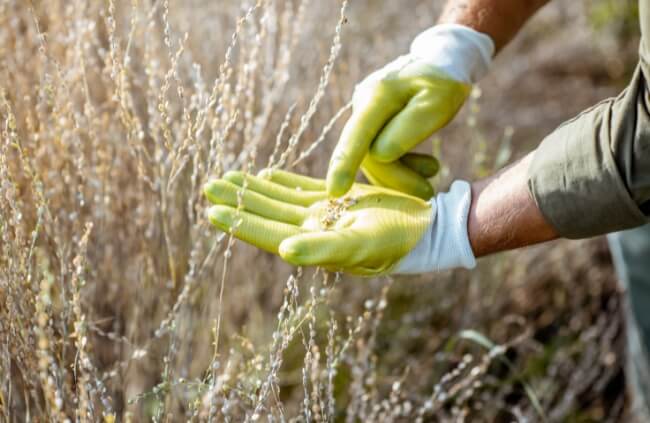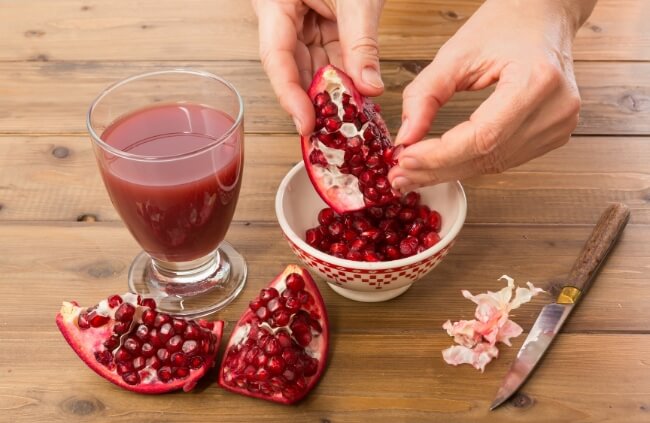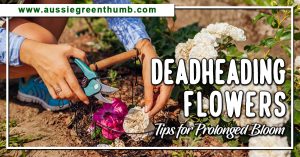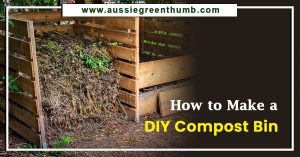Collecting seeds from your own garden, and then growing them, must be one of the most rewarding activities a gardener can experience. More invigorating than buying masses of potted colour from your local nursery at a 50% OFF Sale, even.
However, collecting garden seeds does not come in a one-size-fits-all type program. Garden seeds are as different as the plants that produce them and so ways to collect and harvest them are just as diverse.
More...
Collecting Seeds from Different Plants
Now, before I start going into any detail, my disclaimer is that this is not a research page on collecting garden seeds and their propagation techniques. It’s merely a post featuring some of the basics that
I’ve learned over the past years as I’ve enjoyed my hobby. So, if you feel I’ve missed some important piece of data please share it in the comments section. Ok. Let’s move on.

How to Collect Garden Seeds from Annuals
Starting with the basics, let’s take a look at Basil.
Many flowering annuals will produce seeds if you allow them to – unless it’s coriander and they’ll bolt to seed quicker than a stallion in a paddock of mares.
What’s more they are fairly easy to collect and propagate in future seasons.
Here’s how you do it.
- Allow the seed cases to turn brown and die.
- Remove the seed cases from the plant and place them on a tray with some baking paper underneath. Leave the tray in a cool place to dry out. (The paper is to help you find the seeds after they’ve been evicted from their casings).
- Once the pods or casings are completely dry, it’s just a matter of gently shaking them onto the paper. Remove any husks and superfluous dry foliage from the seed and pour into an envelope. It’s best to use paper envelopes rather than small plastic bags for if the seed is not completely dry they can begin to rot in a plastic bag or container.
- Label and date the seeds and store for the next season.
It’s a fairly easy process and one that should reward your gardening habits the more you do it.
Collecting Seeds from Perennials
Collecting garden seed from your perennials is no more difficult but the art of germinating them may be a little harder. As most plants produce seed in some form, perennials are no different but it’s usually not as readily available as annual garden seeds.
In the case of Camellia sasanqua, the seeds are produced within little apple-like pods and are ready only when they pop open. They can be picked prior to opening and left to dry out but your timing needs to be impeccable for if you pick them too early the seeds won’t have matured enough in order to germinate. The best practice is to check the plant regularly and pick the seed as soon as they have opened up.

Many people ask whether garden seed can be collected from fruit trees and then propagated to grow another tree. Much like a child asking if they can grow an apple tree from the seeds in their apple core. The answer is definitely ‘Yes’ however because many fruit trees have been grafted, the seed that you plant most probably won’t produce the apple that you just ate. It will always revert back to the original plant.
Also, some fruit trees are better grown from cuttings or other forms of propagation than to plant from seed. Avocado trees are a classic example. For an avocado tree to fruit from a seed it could take 14-20 years before you will be rewarded for your efforts whereas if it’s propagated from a cutting you could enjoy some avocados within seven years.
As you did with the annual garden seeds, label and store perennial seeds in a dry place until you’re ready to begin germinating them.
How to Collect Seeds from Native Plants
Collecting seeds from native plants can be a little more tricky – especially Australian natives. Banksia seed pods are almost impenetrable and will require a different tact to make them give up their cargo.
Each nob (not sure of the Latin technical name) contains a seed and they are only released at the right time when grown in their natural habitat. The seeds fall to the ground or are carried through the air and dispersed throughout their local environment.
The trick with harvesting seed from these plants is to apply a little heat. Placing them in a 100°C (212°F) oven for an hour will usually be enough to crack them open and secure the garden seeds. Once harvested they too can be stored in a dry place and germinated at a later date.
With most garden seeds their shelf-life is usually a few seasons. However, germinating them when they’re fresh is usually your best option and will give you better results.
Published on June 7, 2023 by Nathan Schwartz
Last Updated on September 20, 2023




